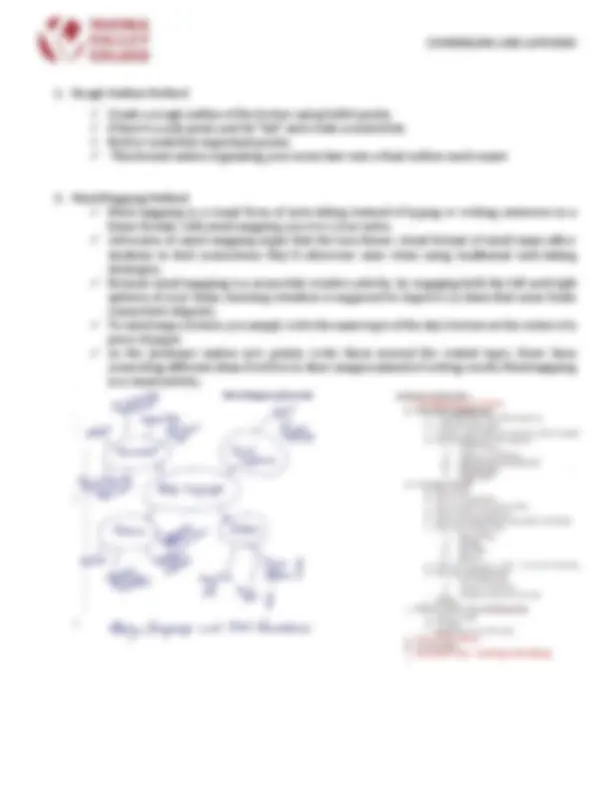COUNSELING AND ADVISING
NOTE-TAKING STRATEGIES AND STYLES
1. Go to class prepared
3-ring binder instead of spiral notebook for easy access
Have highlighters
Read assigned material and previous class notes
2. Improve your listening skills
Enter class with a positive attitude
Make a conscious effort to pay attention
Be adaptable
Remove all distractions (phone off and out of reach)
3. Develop a note-taking method that works for you
Start each new lecture on a new page, date
Write on one side of the paper only for easier reviewing
Leave blank spaces for your comments/questions
Make your notes as brief as possible
Develop a system of abbreviations
Note all unfamiliar vocabulary or concepts you don’t understand
4. Pay close attention to content
Focus on details, or explanations that expand or explain the main points
Definitions, write word for word
Numbered or lists of things discussed
Anything written by the instructor
Information that is repeated or spelled
Information the instructor seems excited about
5. Only write down main points
Anytime the professor says, “You need to know this,” or “This will be on the test”
Anytime the professor repeats himself
Anything the professor writes on the board or includes in a PowerPoint
Anything the professor repeats very slowly so that it can be taken down word for word
Write down examples or hypotheticals the instructor uses during class
Watch for language that shows relationships between ideas. These sorts of points are
often where professors get their exam questions from:
• first, second, third
• especially, most significant, most important
• however, on the other hand
• because, so, therefore, consequently










